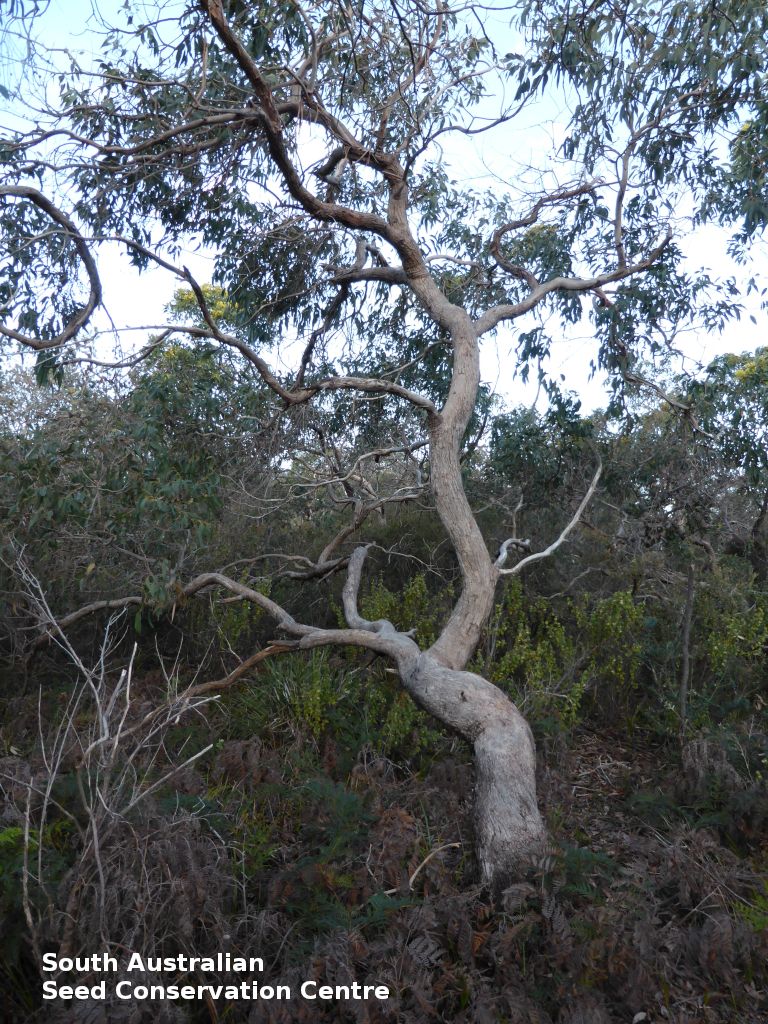
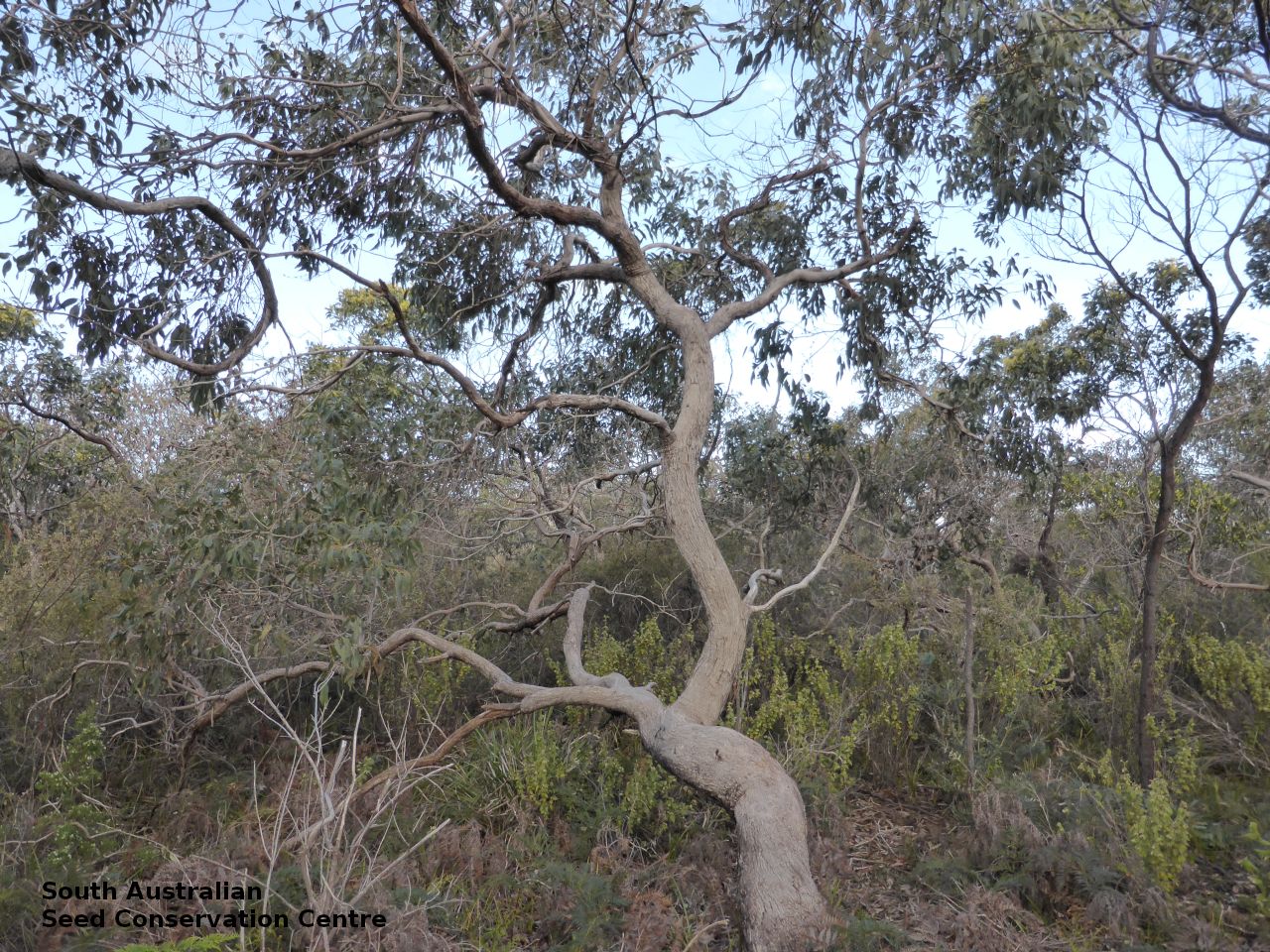
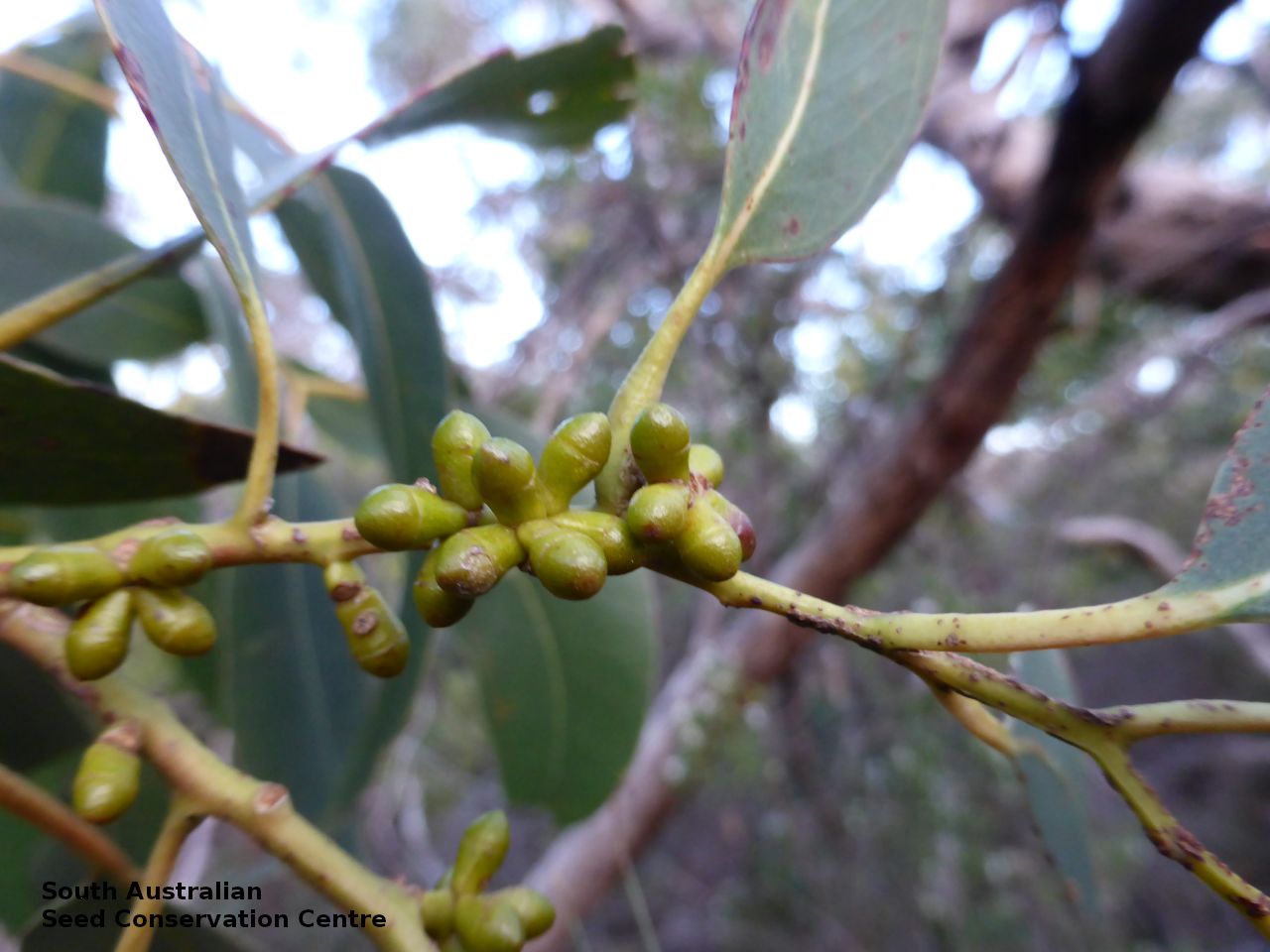
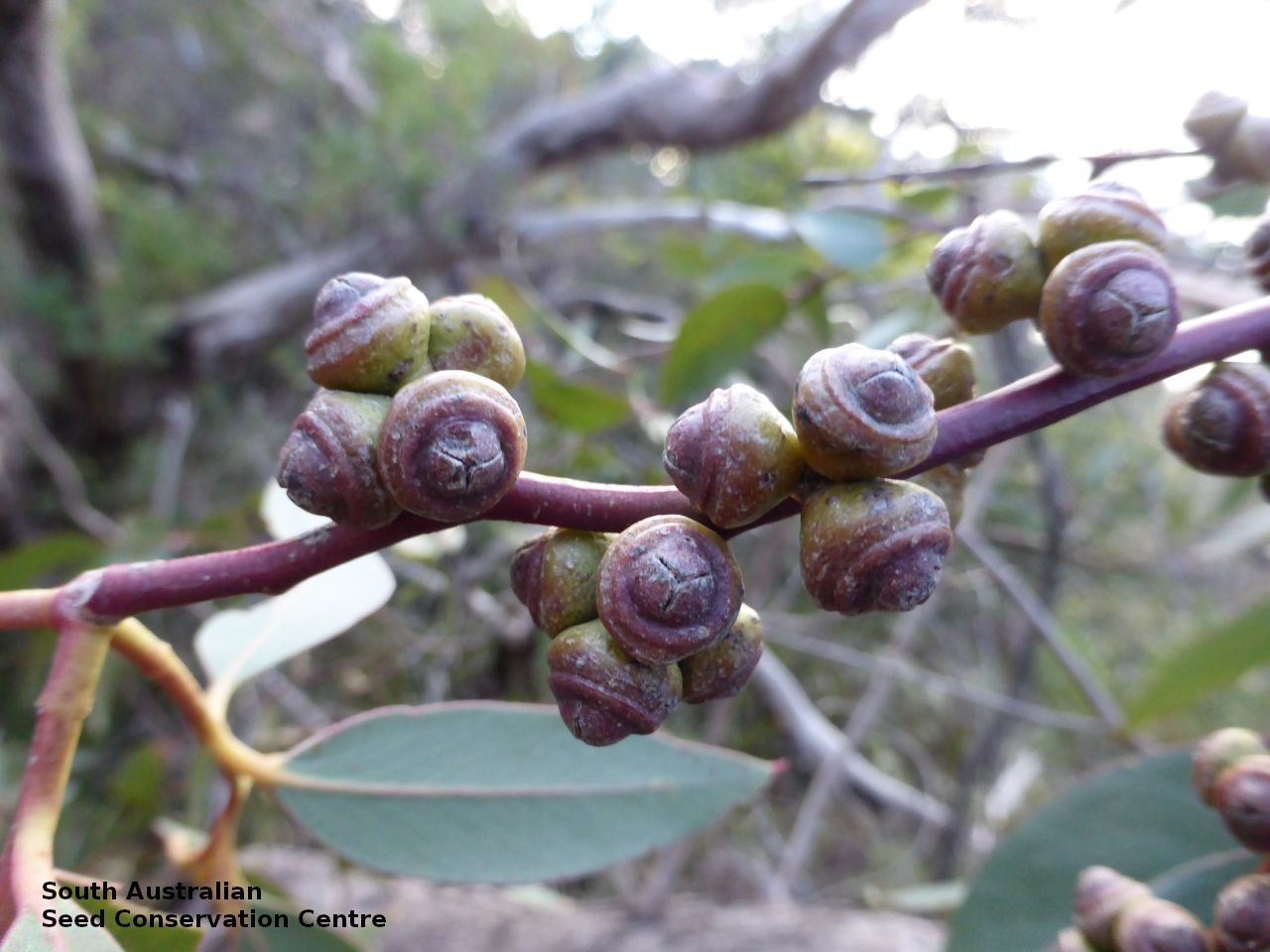
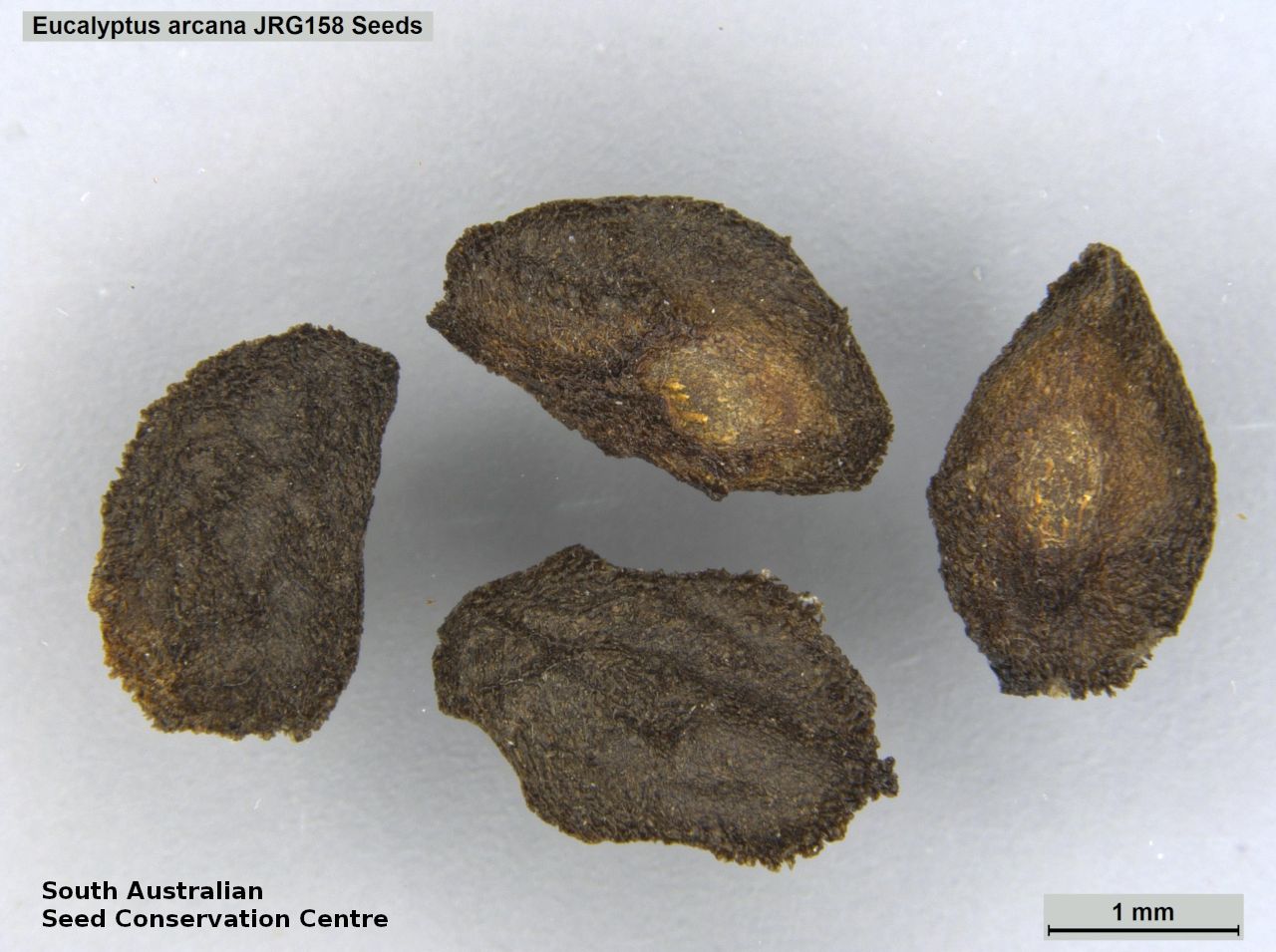


Prior names
Eucalyptus splendens ssp. arcana
Eucalyptus sp. 'Carpenter Rocks'
Common names
Carpenter Rocks Gum
Carpenters Rocks Manna Gum
Mallee Manna Gum
Etymology
Eucalyptus from the Greek 'eu' meaning well and 'calyptos' meaning covered, alluding to the cap or lid which covers the stamens in the bud. Arcana from the Latin 'arcanus' meaning mysterious and secret, alluding to the location of the type specimen being hidden in dense scrub.
Distribution and status
Found at one location in the lower South-east in South Australia near Carpenter Rocks growing on low rises on red clay-loam with outcropping limestone, in dense tall shrubland. Also found at a second location in Victoria. Native. Very rare in South Australia. Very rare in Victoria.
Herbarium region: South Eastern
NRM region: South East
AVH map: SA distribution map (external link)
Plant description
Single- or several-stemmed low straggly tree to 6 m tall with rough, fibrous, grey to grey-brown bark to smaller branches and smooth, grey to cream bark above. Juvenile leaves broad-lanceolate, tapering to the base; bright green. Adult leaves to 120 mm long and 35 mm wide, lanceolate, glossy green. Flowers axillary in groups of 7 with very short or lacking individual stalks. Buds to 7.5 mm long and 5.5 mm wide, egg-shaped, bud-cap cone-shaped equal to the base. Flowers white appearing in February. Fruits are rounded to cone-shaped fruit to 7 mm long and 8 mm wide; disc sunken, to almost level; valves 3 or 4 above the rim. Seeds are dark brown to black ovoid seed to 2.5 mm long and 1.5 mm wide, with wrinkled surface. Seed embryo type is folded.
Seed collection and propagation
Collect seeds between January and December. Collect mature fruits that are dark and hard (difficult to break with a finger nail), with the valves un-open any time of year. Leave the fruits in a breathable container in a dry room for one to two weeks. This allows the valves on the fruit to open and release the seeds. Separate the seeds by placing all the materials into a bucket and shaking it to dislodge the seeds. Pass the material through a sieve to separate the unwanted material. The finer material will contain both seeds (soft) and frass (hard) usually distinguishable from each other but can be very similar in shape and colour. With finer sieves, the seeds can be separated from the frass but this is not essential for storage or propagation. Store the seeds with a desiccant such as dried silica beads or dry rice, in an air tight container in a cool and dry place. From one collection, the seed viability was low, at 45%. Seeds are non-dormant, viable seed should germinate readily.
| Location | No. of seeds (weight grams) | Number of plants | Date collected | Collection number Collection location | Date stored | % Viability | Storage temperature |
|---|---|---|---|---|---|---|---|
| BGA MSB | 16,500 (8.73 g) 8,500 (4.73 g) | 30 | 7-Mar-2007 | DJD778 South Eastern | 1-Aug-2007 | 45% | -18°C |
| BGA | 64,800 (53.63 g) | 20 | 1-Sep-2014 | JRG158 South Eastern | 1-Jan-2016 | 100% | -18°C |
Number of plants: This is the number of plants from which the seeds were collected.
Collection location: The Herbarium of South Australia's region name.
% Viability: Percentage of filled healthy seeds determined by a cut test or x-ray.